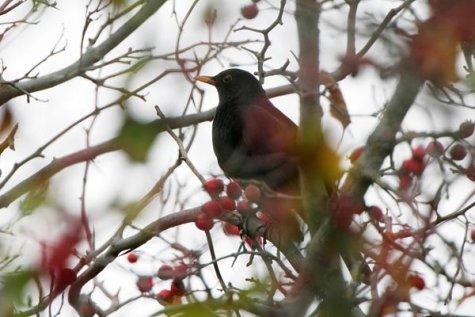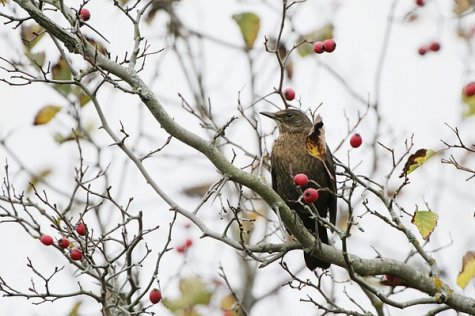Migrating blackbirds
Photos: Arne Ader
Translation: Liis
Blackbird in hawthorn
Blackbird Musträstas Turdus merula
In the thickets on the North Estonian coast blackbirds are busily feeding on berries – these are migrating birds. They feed on both berries and seeds, as well as on insects, small worms and snails hidden in the fallen leaves. In October and November the passing migration is quite numerous. Up to ten thousand birds stay with us to overwinter and in the suburbs they are quite noticeable; harsh winters are survived near humans, there the birds won’t starve altogether. In warm winter weather we can sometimes hear a blackbird quietly fluting in stands of trees with street lighting in the city …
Male birds have a jet black plumage, without gloss, the beak is yellow and a ring of the same colour around the eye. The plumage of females is dark brown, mottled at the throat and breast (very similar to the song thrush) and the beak of adults turns partly yellow. The plumage of young birds is yellowish brown, streaked on the underbelly, and on the brown back we can see lighter patches. On the ground they move in jumps; raising the long tail goes with the style of moving.
The blackbird with its beautiful song is the Swedish national bird.
Blackbird in hawthorn










